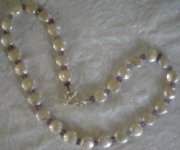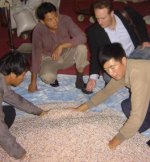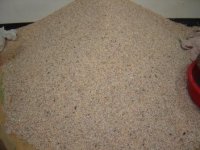P
PearlsAndJade.com
Guest
I've placed three photos of coin pearls on the following page. Its a private page on my web site that can only be accessed by using the url below:
http://pearlsandjade.com/category/coinpearlproject
Because of the need for large size photos in order to get the detail, I had to build a page on my site for the pics instead of posting them here.
The pics show a white 12mm coin pearl with part of the nacre stripped off which leaves the shell nucei clearly visible.
I'm told that these pearls have no "coating"; that they have only had a whitening treatment.
I'm not sure what I'm seeing there. It could be piece of .52mm thick nacre, or it could be a very thin nacre with a .52mm coating. I've cut some of these pearls in half, and I've scraped them, and I still can't determine exactly what it is I'm seeing.
There are a lot of pearl experts here, and I'm sure any one of you can tell by the photos what we're looking at.
You can see the photos on the web page above, and post your comments here. It will be greatly appreciated, and educational for all. I can permanently leave the page with pics in place so future members can see them.
Thanks,
Bill
http://pearlsandjade.com/category/coinpearlproject
Because of the need for large size photos in order to get the detail, I had to build a page on my site for the pics instead of posting them here.
The pics show a white 12mm coin pearl with part of the nacre stripped off which leaves the shell nucei clearly visible.
I'm told that these pearls have no "coating"; that they have only had a whitening treatment.
I'm not sure what I'm seeing there. It could be piece of .52mm thick nacre, or it could be a very thin nacre with a .52mm coating. I've cut some of these pearls in half, and I've scraped them, and I still can't determine exactly what it is I'm seeing.
There are a lot of pearl experts here, and I'm sure any one of you can tell by the photos what we're looking at.
You can see the photos on the web page above, and post your comments here. It will be greatly appreciated, and educational for all. I can permanently leave the page with pics in place so future members can see them.
Thanks,
Bill
Last edited by a moderator:



